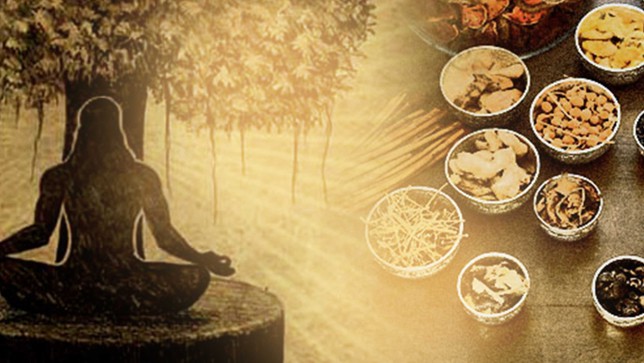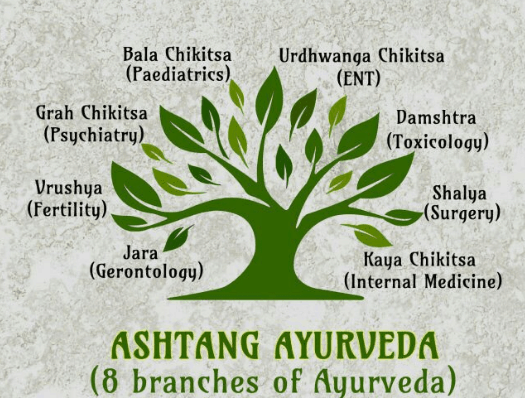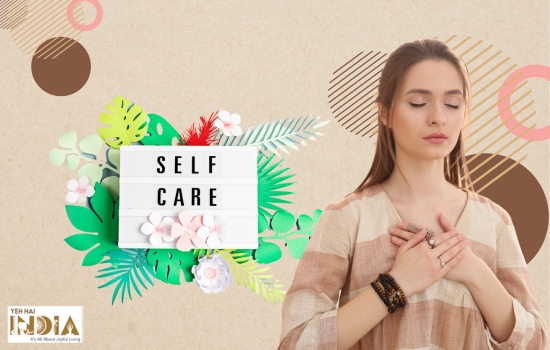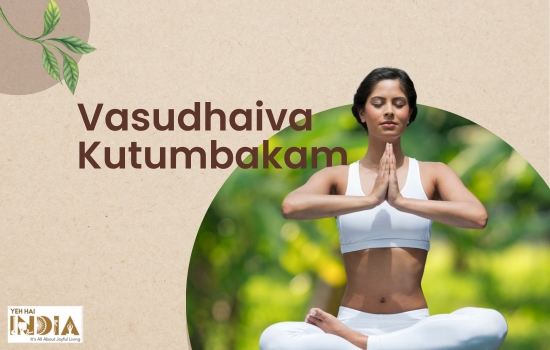Made up of two words- “Ayu” meaning life, and “Veda” meaning knowledge, Ayurveda took birth in the womb of Indian land almost 5,000 years ago. This form of healing finds a place in Hindu religious texts and has continued to spread its roots across the globe through the years. It is considered to be a gift from God which has been passed on to us by saints and holy men.
History of Ayurveda

Originally an oral tradition, Ayurveda is a subsection of Atharvaveda, one of the four Vedas that form the basis of Hinduism. Initially, it was an art learned only by Brahmins, but as time went by, more people discovered it, and the term “Vaidya” was born. Ayurveda was used to cure diseases naturally and understand the importance of a well-balanced mind. It works on the principle that the mind and body are connected, and that the mind is very powerful. People from Rome, Afghanistan, Persia, and many other places came to India to learn this ancient form of medicine. In fact, Avicenna is said to have used Ayurveda as a bade to establish Islamic medicine, while Paracelsus, the father of Western medicine, also took help from Ayurveda. Three energies are central to Ayurveda. They are known as doshas, and it is said that they control one’s body:
Vata
This governs all movement and deals with the nervous system. People who predominantly have Vata constitution will have qualities of air and space, which is why these people are quick, thin, and swift. An imbalance in Vata may lead to anxiety and fear. Qualities of Vata are airy, mobility, clarity, lightness.
Pitta
It combines the qualities of the sun, and takes care of digestion, body temperature, and metabolism. These people are intelligent, sharp-witted, and athletic. When out of balance, they become moody and ill-tempered.
Kapha
Controlling the balance of bodily fluids, muscles, and growth of cells, Kapha reflects the elements of water and earth. Anything dense in our bodies comes under Kapha. It is concerned with the seven tissues of our body, weight, and lubrication for joints. People with predominant Kapha usually have a calm temperament.
These doshas are said to affect the personality of a person. Most of us have two dominant doshas, which are constituted at the time of conception and remain the same for us throughout our lifespan. Ayurveda aims to maintain harmony between these doshas, which leads to a sound mind and healthy body.
Also Read: Yoga In Indian Culture
Branches Of Ayurveda

Ashtanga Ayurveda is a collection of the eight branches that the sacred art of Ayurveda is divided into. They are:
1. Kayachikitsa
Considered to be general medicine, or medicine concerning the whole body, this branch of Ayurveda deals with the body’s digestive system and metabolism. It is made up of two words where “kaya” means body, and “chikitsa” means treatment. Diseases that are treated through this arise because of problems in metabolism. Treatment may be internal or external.
2. Graha Chikitsa
Also known as “bhoot vidya,” this branch mainly relates to psychological disorders- psychosis, mania, etc. It is named so because ancient people believed that ghosts and spirits affected their lives. Some treatments that are recommended under Graha Chikitsa are the use of herbs, yoga, deep breathing, repetition of special mantras, etc.
3. Baala Chikitsa
Dealing with the treatment of diseases in children, this is also called Kaumara Bhritya. When compared with modern medical science, it can be understood as Paediatrics and Obstetrics. It also deals with prenatal and postnatal care and believes that care at the developmental age can help an individual life long. This is practiced keeping in mind that all symptoms may not be explainable by the child.
4. Urdhyaanga Chikitsa
Concerns the diseases in the upper part of the body- eyes, neck, mouth, nose, ears. As per modern medical science, it refers to Otorhinolaryngology and Ophthalmology. It also called Shalakya Tantra because here, the physicians use specialized equipment called Shalakya.
5. Shalyarog Chikitsa
This is for surgical procedures. Many procedures like cataract surgery, kidney stones, etc. are performed under this, and it makes use of equipment like scalpel, scissors, and many other things. (yantras and shastras). This was of great importance during times of war when injuries were made because of arrows, swords, or any other foreign thing. Sushruta is known as the ‘Father of Plastic Surgery’ and was a practitioner of this branch of Ayurveda.
6. Jara Chikitsa
Focusing on the care of the elderly, it makes use of many natural oils and lotions to retain the vitality of skin, remove wrinkles, enhance memory, and improve physical strength. Alternatively known as Rasayana, it helps to lead a long and healthy life.
7. Agad Tantra
It deals with tackling problems that occur because of toxins or poisons. Diseases caused by these can be contracted from a poisonous bite of an animal, insect, or reaction from a metal.
8. Vajikarana (Vrishya Chikitsa)
Vaji means Horse, and this branch of Ayurveda aims at providing strength similar to that of a horse, It talks about sexual health and satisfaction and the problems related to infertility. It gives power and endurance to bring up future generations. It also helps to increase sexual pleasure, performance, and potency.
Ayurveda is considered as one of the oldest medical practices in the world and was way ahead of its time. Like every other time, India continues to amaze us with its vast treasure of knowledge!









